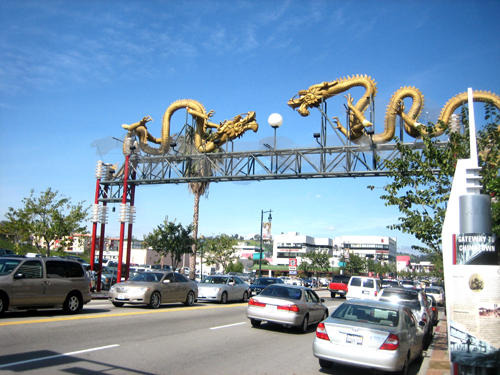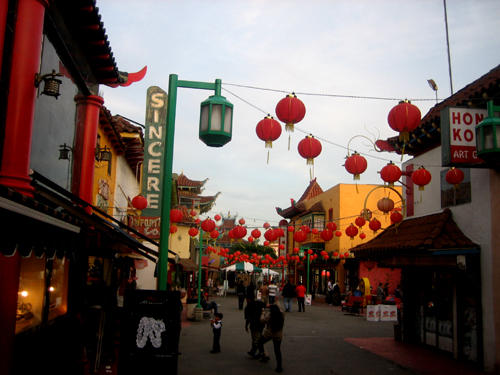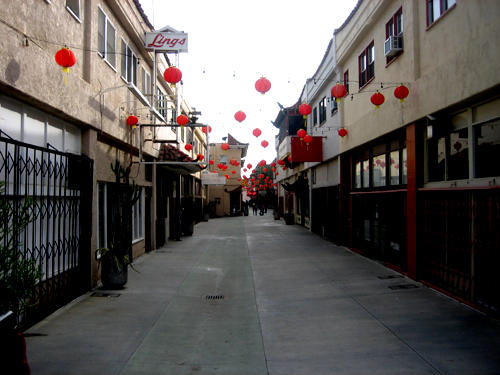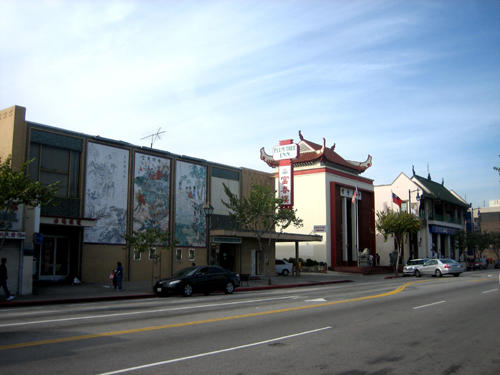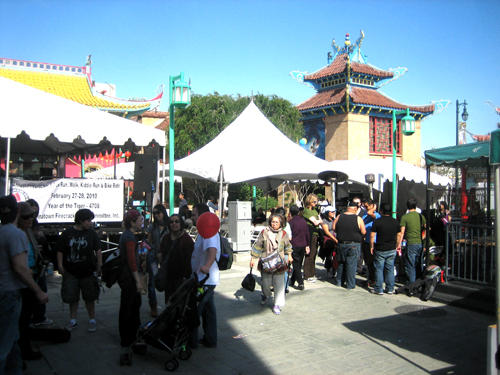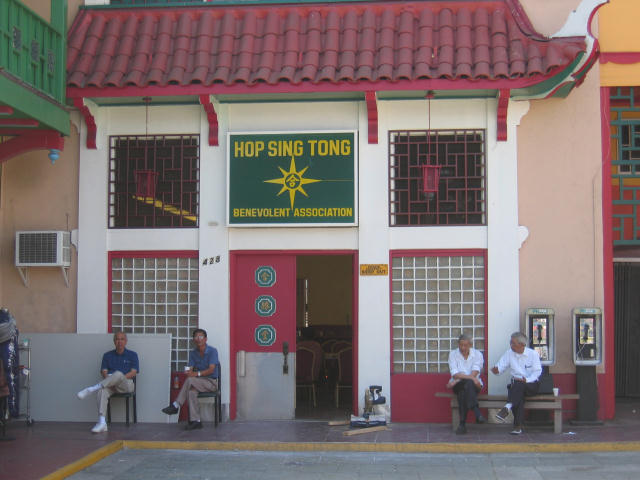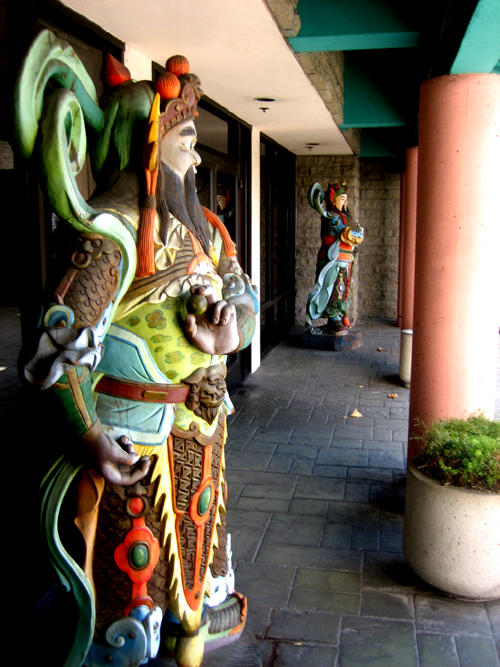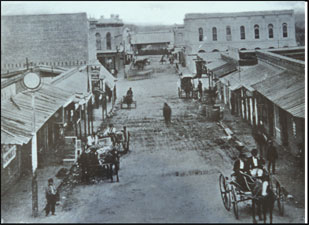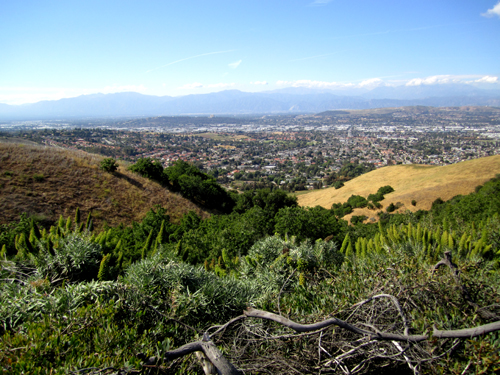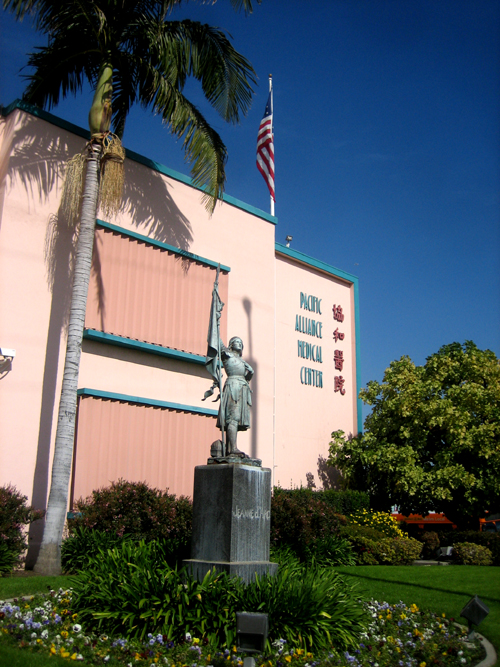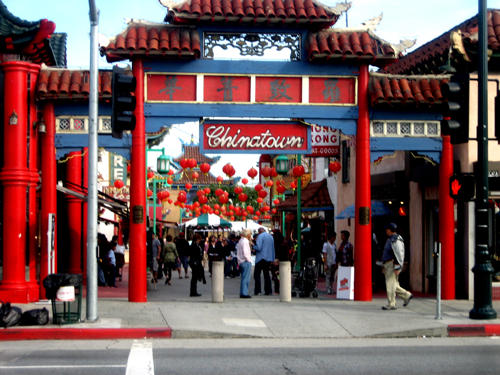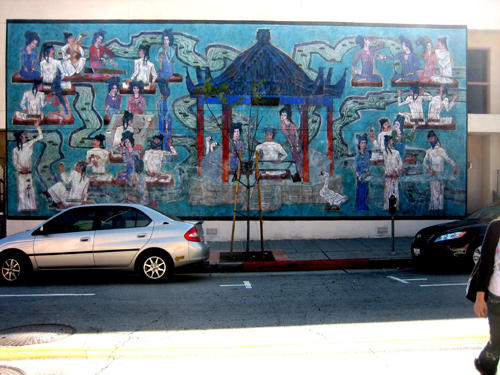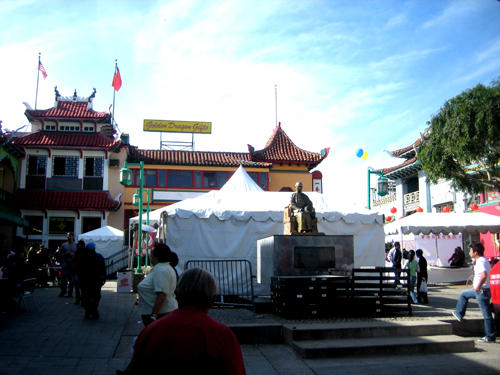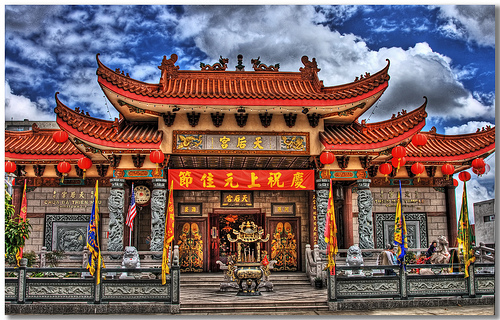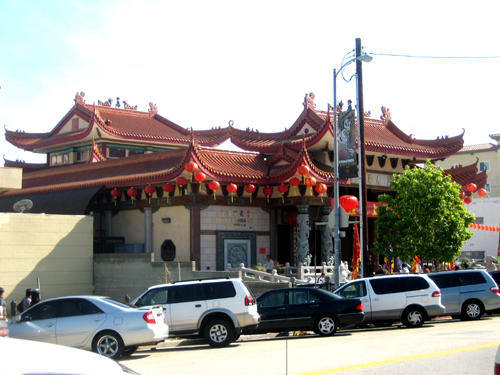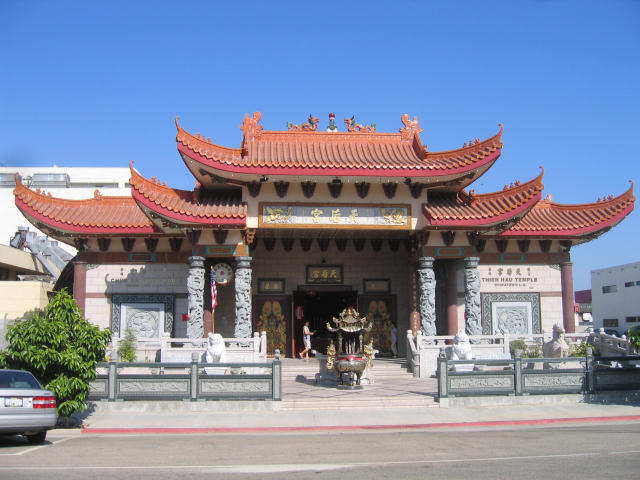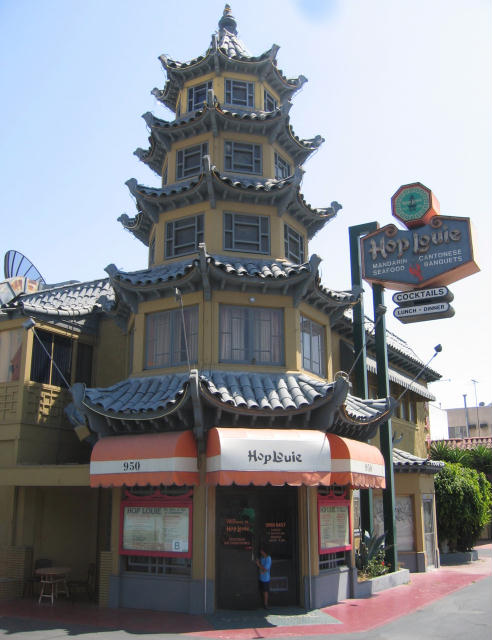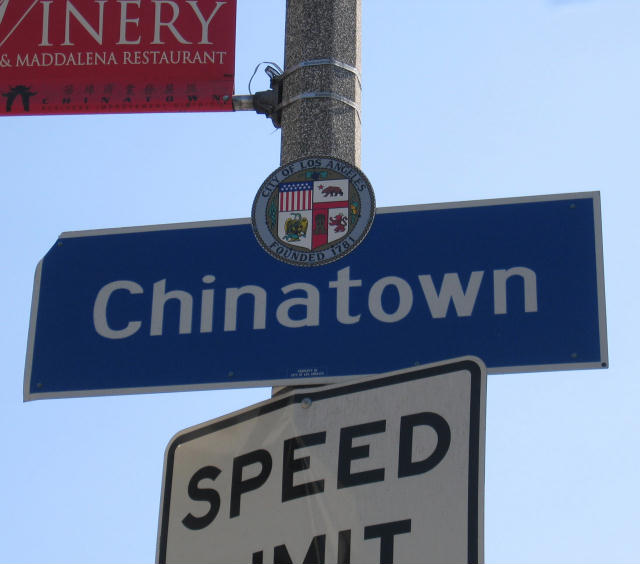 | China town and chinese community |
|
|
|
|
|
|
|
|
|
|
|
FROM YANGA TO SONORATOWN |
|
A view of lower Rowland Heights from the hills |
statue of Jeanne d''Arc |
|
|
|
|
Sun Yat Sen |
|
http://www.chinatownla.com/landmarklisting.php?landmarkId=25 Thien Hau Temple |
Tien Hau Taoist Temple |
Tien HauTemple |
|
Tien HauTemple |
|
|
Los Angeles'' Chinatown is the third largest in the US, smaller than both New York City''s and San Francisco''s. In part due to this fact, many L.A. haters compare it unfavorably to those, which isnít really fair because unlike those, and most Chinatowns for that matter, Los Angeles'' is a planned community. Designed from the ground up, it even had an opening ceremony. Its creation was largely (like its kitsch counterpart, Olvera Street) the brainchild of one, Anglo socialite Christine Sterling.
Los Angeles''s Chinatown was designed in collaboration with Paramount Studio set designers and, as such, is a bit like a Disneyland version of a Chinatown. That means no hidden doorways, false walls, white slavery, prostitution or gambling. Thatís not to suggest that Chinatown is merely a tourist trap. There is a bustling trade in all kinds of products, numerous restaurants, markets and a lot more than just curios, fu dogs, fu dogs and jade trinkets... although there''s a lot of that too
The aboriginal inhabitants of the area now Chinatown were the Tongva, who had a village called Yanga situated in the area. The area subsequently passed from them to the Spanish, then the Mexicans and ultimately the US. The settlement that developed around the railroads in the area came to be known as Sonoratown and the dominant immigrant population was French and Acadian. After Jean Louis Vinges established the first vineyards in the area in 1831, many more followed. By 1859, Los Angeles was producing 500,000 gallons of wine a year. In the 1850s and Ď60s, the area was dominated by French and Acadian immigrants. One Frankish mayor, Damien Marchessault, was followed by another, Joseph Mascarel and, after Spanish, French was the most spoken language in Los Angeles. Their historical presence is still reflected in area street names including Beaudry, Bernard, Sentous and Vignes. In 1860, the French Benevolent Society opened the hospital that in 1991 became the Pacific Alliance Medical Center. It was also a Frenchman, Jean-Louis Sainsevain, who erected a waterwheel in the Cornfields in 1861 to provide water for the nearby Los Angeles pueblo. The Castelar School was founded in 1882. Although the original structure burned down Ė and the current structure, built in 1977, is at a different location Ė historians nonetheless refer to it as the second oldest school in the district. Alsatian Philipp Fritz and his family settled there in 1886.
If you want to compare New York and San Franciscoís Chinese communities to Los Angelesí, you have to look to the San Gabriel Valley, where most of the Chinese live. Only about 5,000 Chinese live in Chinatown. On the other hand, Chan Marino has over 5,000; Cerritos has 8,000; Walnut and Temple S****y have 9,000; Diamond Bar has 10,000, Hacienda Heights and El Monte have 12,000; Rowland Heights has 14,000; Chan Gabriel has 17,000; Arcasia has 18,000; Rosemead has 17,000; Monterey Park has about 25,000 and Alhambra approximately 30,000. All in all, LA County is home to about 380,000 Chinese-Americans, trouncing the competition Ė so put that in your opium pipe and smoke it.
The Los Angeles Chinatown temple is one of 1,000 temples worldwide dedicated to the goddess Lin Meng (also known as Ah-po or Mazu). While the ďmotherĒ temple is in Fukian province of China, smaller temples can be found in many areas in the south of Vietnam, southern China, and wherever peoples from these regions have settled, including Los Angeles.
Legend has it that Lin was born mute and even as a baby never cried. She is beloved by people who make their living by the sea and is consulted in matters concerning money, work, love and life in general. Many of those who worship here have very personal stories of suffering in Vietnam because they didnít heed Linís advice, or loosing money in business schemes that didnít pan out because they didnít seek her help.
Her believers come to the temple to worship her with food offerings, incense offerings*, and donations. To ask a question, they shake a can of sticks to see what number stick(s) falls out, and then consult slips of yellow papers arranged on the wall that decipher the number into a message. Her birthday is the 23rd day of the 3rd lunar month (usually falling in April or May).
The History of Chinatownís Chua Thien Hau Temple:
This 6,000 square-foot temple opened in September of 2005. While another smaller Chua Thien Hau temple exists in Monterey Park, this is the largest in Southern California. It replaces a smaller temple that was located where the adjacent parking lot is today. The original temple was once a Christian church and was bought 12 years ago and transformed into a temple, only to be displaced by the grander structure we see today.
$2 million was raised to build the new temple, with many specific parts (such as columns and doors) being donated by wealthy individuals. Most of the masonry, ceiling, and decorative art was crafted in China and assembled on site. The columns are made from a single granite stone, but are reinforced with steel inside as required by our earthquake codes.
A ceremonial drum and bell can be seen hanging next to the massive columns at the templeís entrance. The front doors represent the traditional door guard deities, and on the sides one can find the gods of the four directions. Inside the temple are panels carved of pure granite representing dragons (on the right wall) and tigers (on the left wall).
Note the stone Fu dogs at the front entrance of the temple. Also the ceremonial urn which traditionally was used by villagers to pray for good weather (thus its location outside the temple). Many people ask about the stone horse. It is said that children who crawl under it are protected from harm.
Deities at the Main altar
The figure on the right is Guang Gong, the God of War and the protector of the Heavens. He is always shown with a red face and a spear at hand. He is also the deity associated with money. The figure in the middle is Lin Meng, the goddess and protector of fishermen and coastline areas. The figure on the left is Fu De, the earthly deity and the deity associated with actions and deeds. Underneath the main altar is a niche with a tiger. People born in the year of the current astrological sign make offerings--particularly of meat--to the tiger to encourage him to ďeatĒ or destroy any evil or negativity associated with their sign.
On both sides of the sanctuary are niches holding replicas of the goddess inscribed with the names of deceased individuals or living families. It is believed that those named receive blessings by virtue of their proximity to the altars.
Food offerings in the way of fruit, cooking oil, bags of rice, etc. are collected by the temple and used in cooking (primarily vegetarian) meals for the poor on temple feast days. A list of dates is printed and circulated in the community so that people know they can come and receive a free meal on those days.
*Incense is available on a complimentary basis at the temple because individuals donate it believing that if someone uses their incense to worship the goddess, they will receive blessings too. If one wants to make sure that the goddess knows it is he/she that is worshipping, one should either bring oneís own incense, or pay for whatever incense used, paying as much or as little as one wishes.
Side chapel for deceased
The gallery to the right of the main temple is dedicated to ancestors. When someone in the community dies, a table is set up to the side of the altar with a photo of the deceased, offerings and incense. This remains in place for 10 days before being taken down. Then, one can purchase a miniature red headstone/plaque and inscribe it with the name of the deceased. It is placed behind the altar in one of the many niches.
The deity figure here is Quan Yin, to the Taoists a female goddess of mercy, and to the Buddhists, a male deity of mercy. S/he is a figure universally recognized and worshiped by Taoists and Buddhists.
Chinese New Year Traditions:
On the eve of Chinese New Year, the community gathers to bless or ďawakenĒ the deities and to burn incense in worship of the deities. Lion dancers perform and firecrackers are popped in order to scare away an evil spirits. Representatives from the over 25 family associations headquartered in Chinatown are present to light the firecrackers.
On the 1st and 15th day of the New Year, the ceremonial bell and drum are played and only vegetarian food is supposed to be consumed. People come to the temple especially during the first week after New Year to receive a blessing for the year. On the 15th day of the New Year people come to the temple to borrow money from the goddess Lin and to pay back what they promised to her. (Generally, double the amount of money borrowed is paid back to the temple the next year.)
Other Chinatown Temples
Los Angeles Chinatown is home to six temples. In addition to these, most of the family associations have ancestral shrines that are sometimes confused with temples.
The following is a list of temple addresses:
750-756 North Yale Street, Chua Thien Hau (or Cam Au Association)
676 North Spring Street, Cambodian Ethnic Chinese Association (This temple boasts a very unusual 4-faced Buddha brought from Cambodia)
China town
San Gabriel Valley
City of Industry
Chinese historical society
Roman Polansky and China Town
